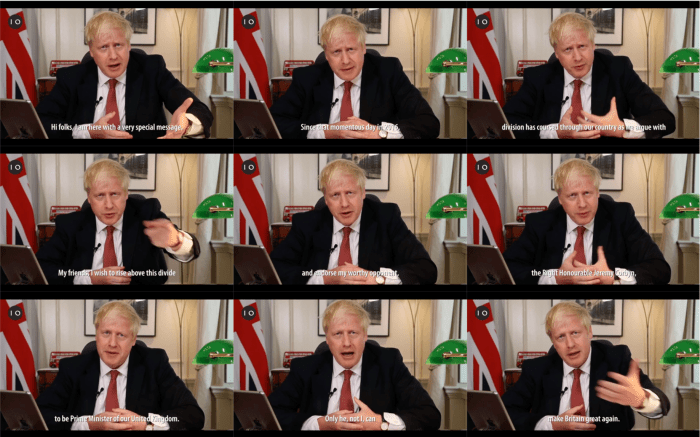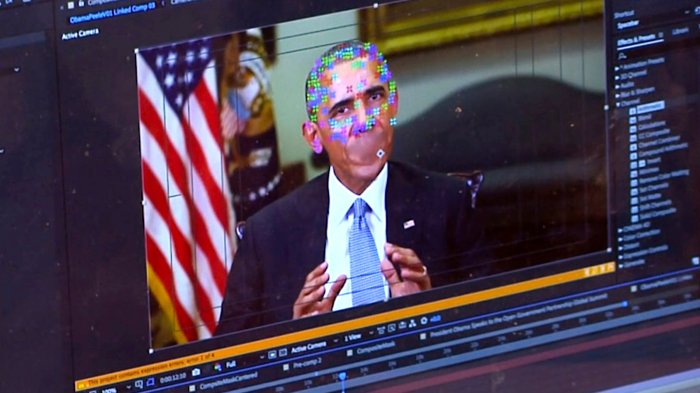Political deepfakes are spreading like wildfire thanks to GenAI, the advanced technology that allows for the creation of incredibly realistic fake videos. This technology, fueled by artificial intelligence, is blurring the lines between reality and fabrication, raising concerns about the impact on public trust, democratic processes, and even the very fabric of our society.
Imagine a world where anyone can manipulate video footage to make it appear as if a politician said or did something they never did. This is the reality we are facing with the rise of deepfakes, a technology that is becoming increasingly sophisticated and accessible. From fabricated speeches to doctored videos of political figures, the potential for misuse is vast and alarming.
The Rise of Political Deepfakes
The digital landscape is witnessing a rapid proliferation of political deepfakes, a phenomenon that has sparked widespread concern and debate. These synthetic videos, often indistinguishable from reality, leverage the power of artificial intelligence (AI) and generative models to manipulate and distort political narratives, posing significant threats to public trust and democratic processes.
Technological Advancements Enabling Deepfakes
The creation of realistic deepfakes is made possible by the remarkable advancements in AI and generative models. Deep learning algorithms, particularly Generative Adversarial Networks (GANs), have revolutionized the ability to synthesize realistic images and videos. GANs consist of two competing neural networks: a generator that creates synthetic data and a discriminator that distinguishes between real and fake data. Through this adversarial process, GANs learn to generate increasingly realistic deepfakes that are nearly indistinguishable from the original source material.
Examples of High-Profile Political Deepfakes
The emergence of high-profile political deepfakes has highlighted the potential impact of this technology on public perception. One notable example is the deepfake video of former US President Barack Obama, created by BuzzFeed in 2018, which showcased the potential for AI-generated content to be used for satire and entertainment. However, the video also raised concerns about the potential for malicious use of deepfakes to spread misinformation and influence public opinion. Another example is the deepfake video of Ukrainian President Volodymyr Zelenskyy, circulating in the early days of the Russia-Ukraine war, which purportedly showed him urging his troops to surrender. This deepfake, while debunked, illustrated the potential for deepfakes to be used as a tool of propaganda and disinformation during times of conflict.
The Impact of Deepfakes on Public Trust
The rise of deepfakes, hyperrealistic synthetic media, poses a significant threat to public trust in political institutions and leaders. Deepfakes have the potential to manipulate public opinion, influence elections, and sow distrust in democratic processes. This technology’s ability to create convincing yet fabricated content raises serious concerns about the future of truth and accountability in the digital age.
Deepfakes and the Erosion of Trust in Political Institutions
Deepfakes can undermine public trust in political institutions by blurring the lines between reality and fabrication. When individuals are unable to discern truth from falsehood, it becomes increasingly difficult to hold leaders accountable for their actions. The potential for deepfakes to be used to spread misinformation or create fabricated scandals can erode public confidence in the integrity of political processes. For instance, a deepfake video of a politician making a controversial statement could be widely circulated online, damaging their reputation and public image, even if the statement was never actually made.
Legal and Ethical Considerations
The rapid proliferation of political deepfakes presents a complex web of legal and ethical challenges that demand careful consideration. These technologies, capable of creating highly convincing synthetic media, blur the lines between reality and fabrication, raising concerns about their potential to manipulate public opinion, erode trust, and undermine democratic processes.
Legal Challenges of Political Deepfakes
The legal landscape surrounding deepfakes is still evolving, and existing laws often struggle to adequately address the unique challenges they pose. One key area of concern is the potential for deepfakes to be used for defamation and libel. Deepfakes can be used to create fabricated videos or audio recordings that falsely portray individuals in a negative light, potentially causing significant reputational damage and legal repercussions. Another challenge arises from the difficulty in determining the origin and authenticity of deepfakes, making it challenging to identify and hold perpetrators accountable. Additionally, the use of deepfakes in political campaigns raises concerns about election interference and the potential for manipulating voters’ perceptions of candidates.
Ethical Implications of Deepfakes, Political deepfakes are spreading like wildfire thanks to genai
Beyond legal ramifications, deepfakes raise profound ethical concerns. The ability to create realistic synthetic media raises questions about the nature of truth and the integrity of information. Deepfakes can be used to spread misinformation, sow discord, and erode public trust in institutions and individuals. They can also be used to violate privacy, by creating fabricated images or videos of individuals without their consent. The ethical implications of deepfakes extend to freedom of expression, as they raise concerns about the potential for censorship and the suppression of dissenting voices.
Framework for Regulating Deepfakes
Given the potential harms associated with deepfakes, there is a growing consensus that a comprehensive regulatory framework is necessary to mitigate their negative effects. Such a framework should encompass several key elements. First, it should require clear labeling and disclosure of deepfakes to ensure transparency and enable users to make informed decisions about the content they consume. Second, it should establish mechanisms for accountability and redress for victims of deepfake-related harms, including defamation, libel, and privacy violations. Third, it should promote research and development of technologies that can effectively detect and identify deepfakes, enabling platforms and individuals to better identify and mitigate their spread.
Countering the Spread of Deepfakes: Political Deepfakes Are Spreading Like Wildfire Thanks To Genai
The rise of deepfakes presents a significant challenge to the authenticity of information and the trust we place in digital content. As these hyper-realistic manipulated videos become increasingly sophisticated, it is crucial to develop effective strategies for detecting and combating their spread. This section will explore methods for identifying deepfakes, the role of social media platforms and news organizations, and strategies for educating the public.
Detecting and Verifying Digital Content
Identifying deepfakes requires a multi-pronged approach, leveraging both technological tools and human expertise. Several methods are being developed to detect inconsistencies and anomalies that indicate manipulation:
- Facial Analysis: Deepfake detection algorithms can analyze subtle inconsistencies in facial expressions, movements, and lighting that may not be apparent to the human eye. For example, a deepfake might exhibit unnatural blinking patterns or inconsistencies in the way light reflects off the subject’s skin.
- Audio Analysis: Similar to facial analysis, deepfakes can be detected by analyzing inconsistencies in audio recordings. Algorithms can identify unnatural lip movements, inconsistencies in speech patterns, and variations in vocal pitch and tone that are not present in genuine recordings.
- Metadata Examination: Examining the metadata associated with a video or image can provide valuable clues about its authenticity. Metadata includes information about the creation date, location, camera model, and other technical details that can be used to verify the source and origin of the content.
- Reverse Image Search: Tools like Google Reverse Image Search allow users to search for an image across the internet to determine its origin and potential instances of manipulation. This can help identify if an image has been altered or used in other contexts.
The Role of Social Media Platforms and News Organizations
Social media platforms and news organizations play a crucial role in combating the spread of deepfakes. They can implement a variety of measures to mitigate the harm caused by these manipulated videos:
- Content Moderation: Social media platforms should actively moderate content to identify and remove deepfakes that violate their terms of service. This can include using automated detection algorithms and human reviewers to flag suspicious content.
- Fact-Checking Initiatives: News organizations can play a vital role in fact-checking and debunking deepfakes. They can employ dedicated teams to investigate the authenticity of viral videos and provide context and analysis to help readers understand the potential for manipulation.
- Transparency and Disclosure: Both social media platforms and news organizations should be transparent about their policies and procedures for dealing with deepfakes. This includes clearly communicating how they identify and remove manipulated content and providing users with tools to report suspicious videos.
Educating the Public
Educating the public about deepfakes is essential for building critical thinking skills and promoting media literacy. A comprehensive strategy for public education should include:
- Raising Awareness: Public awareness campaigns can be launched to educate the public about the existence of deepfakes, their potential impact, and the importance of critical thinking when consuming digital content.
- Teaching Media Literacy Skills: Educational programs can be developed to teach individuals how to identify and evaluate the authenticity of digital content. This can include training on how to spot inconsistencies in facial expressions, audio recordings, and metadata.
- Promoting Responsible Sharing: Encouraging individuals to be cautious about sharing videos and images online, particularly if they are not from a trusted source, is crucial for mitigating the spread of deepfakes.
The Future of Deepfakes in Politics
The rapid advancement of artificial intelligence (AI) and deep learning technologies has ushered in a new era of digital manipulation, with deepfakes emerging as a powerful tool capable of altering reality itself. While deepfakes have found applications in entertainment and creative industries, their potential impact on politics is a matter of growing concern. As deepfake technology continues to evolve, its implications for political discourse, campaigning strategies, and the very fabric of democracy are becoming increasingly complex and unpredictable.
The Increasing Sophistication of Deepfakes
The future of deepfakes in politics is inextricably linked to their evolving sophistication. As AI algorithms become more powerful and data sets larger, the ability to create realistic and convincing deepfakes will only improve. This means that future deepfakes could be even more difficult to detect, blurring the lines between reality and fabrication. For instance, researchers at the University of California, Berkeley, have developed a deepfake technology that can generate synthetic videos of individuals speaking in different languages, complete with realistic lip movements and facial expressions. This technology could be used to create deepfakes of politicians delivering speeches in languages they do not actually speak, potentially swaying public opinion in ways that are difficult to discern.
The Impact of Deepfakes on Political Discourse and Campaigning Strategies
Deepfakes have the potential to disrupt political discourse and campaigning strategies in a number of ways. One significant concern is the use of deepfakes to spread misinformation and disinformation. For example, a deepfake video of a political candidate making inflammatory or controversial statements could be circulated online, damaging their reputation and swaying public opinion. Deepfakes could also be used to create fabricated scandals or to smear opponents, potentially influencing the outcome of elections.
In the 2020 US presidential election, a deepfake video of Joe Biden appearing to endorse Donald Trump circulated on social media. While the video was widely debunked, it highlighted the potential for deepfakes to influence voters, especially in a highly polarized political climate.
The spread of political deepfakes poses a significant threat to our democratic institutions and the very foundation of truth. As the technology continues to evolve, it becomes increasingly challenging to discern what is real and what is fabricated. It’s crucial that we develop strategies to combat the spread of deepfakes, educate the public about their dangers, and hold those who misuse this technology accountable. The future of our political landscape depends on our ability to navigate this complex and rapidly evolving landscape.
It’s a wild world out there, with political deepfakes spreading faster than a wildfire fueled by GenAI. Meanwhile, over on Amazon, Oura is making its products more accessible, oura starts selling its products on amazon . We’re living in a time where truth is harder to find than ever, so maybe that Oura ring can help us stay grounded while we navigate this digital landscape.
 Standi Techno News
Standi Techno News

